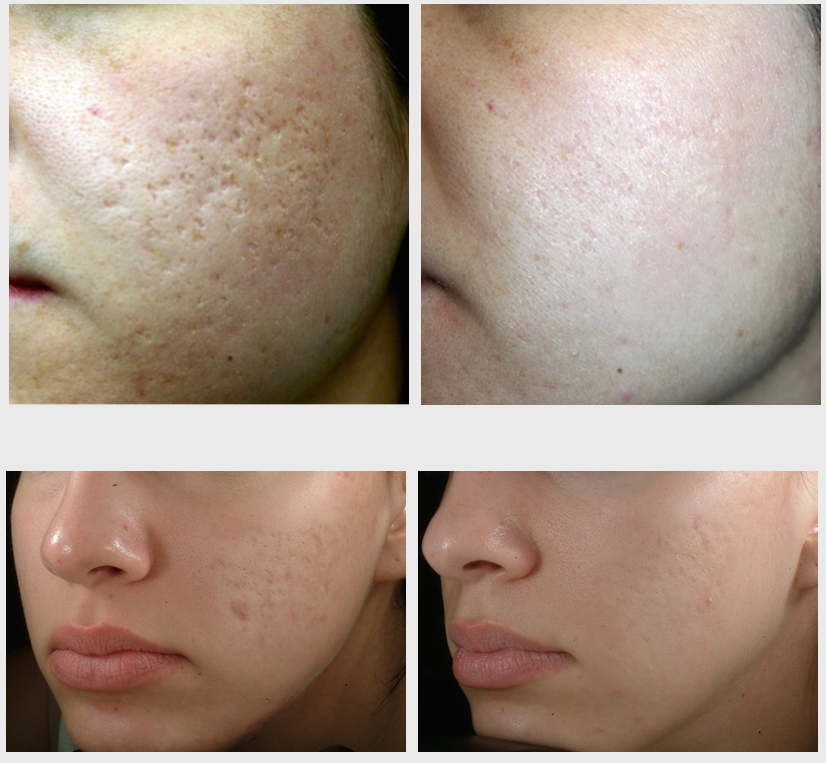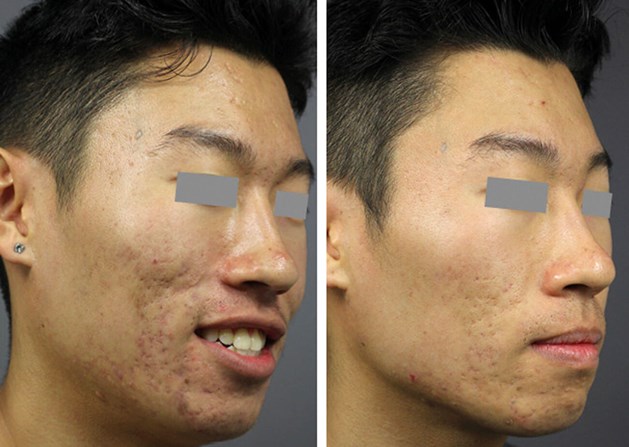Acne and Acne Scars Treatment: Transform Your Skin with Proven Solutions
Acne and Acne Scars Treatment: Transform Your Skin with Proven Solutions
Blog Article
Comprehending the Numerous Skin Disease and Effective Treatment Options for Acne Scars
Acne scars represent a complex interplay of skin disease that considerably effect people' self-worth and total skin wellness. Recognizing the distinctive kinds of acne marks-- hypertrophic and atrophic-- together with their underlying causes, is critical for figuring out reliable therapy methods. Different restorative choices exist, ranging from advanced skin-related treatments to natural treatments. Nonetheless, the effectiveness of these treatments commonly depends upon customized assessments by certified experts. As we discover the landscape of acne scar management, it comes to be obvious that the journey towards clearer skin may entail even more than just topical remedies.
Kinds Of Acne Marks
The two main groups of acne scars are hypertrophic and atrophic marks. These marks are further categorized right into 3 subtypes: ice pick scars, which are slim and deep; boxcar scars, which are larger and have distinct sides; and rolling marks, which create a wave-like appearance due to unequal skin appearance.
On the other hand, hypertrophic scars result from an overflow of collagen throughout the recovery process, resulting in elevated locations on the skin. These marks are frequently solid and can differ in shade, sometimes appearing red or darker than the surrounding skin.

Reasons For Acne Scarring
Scarring takes place as a result of the body's natural recovery action to inflammation and injury triggered by acne sores. When acne types, it triggers an inflammatory response, bring about the release of various cytokines and development elements that promote recovery. However, this procedure can often result in too much cells formation or inadequate fixing, leading to marks.
The main reasons for acne scarring include the intensity of the acne itself, duration of the sores, and individual skin types. Severe inflammatory acne, such as nodules and cysts, is more probable to cause scarring because of deeper tissue damages. Additionally, inappropriate handling of acne lesions, such as squeezing or choosing, can exacerbate tissue injury and inflammation, boosting the likelihood of scarring.
Hereditary proneness also plays a substantial role; individuals with a family history of scarring go to a greater risk. Skin type and color can affect mark formation, as darker skin tones may experience post-inflammatory hyperpigmentation, while lighter skin may establish atrophic marks.

Therapy Alternatives for Scarring
Reliable therapy alternatives for acne scarring differ relying on the kind and extent of the marks. Normally classified right into atrophic, hypertrophic, and keloid scars, these conditions require customized strategies for optimum outcomes.
For atrophic scars, which are defined by a loss of tissue, treatments such as chemical peels, microdermabrasion, and laser treatment are frequently employed. These methods promote skin revival and promote collagen production, thus improving skin appearance. Subcision, a minimally intrusive procedure, can also work by damaging up fibrous bands under the skin.
Hypertrophic and keloid marks can be more testing to deal with. Choices include corticosteroid shots to minimize inflammation and flatten the marks. acne treatment for sensitive skin. In some situations, cryotherapy or laser therapy might be recommended to decrease their look
Surgical options are readily available for serious scarring, where excision or skin grafting may be essential. It's crucial for individuals to seek advice from a dermatologist to analyze their certain scar kind and discuss one of the most my link suitable therapy plan. Incorporating multiple treatments frequently generates the very best outcomes, making sure that each client's one-of-a-kind skin condition is resolved efficiently.
Natural Home Remedy and Natural Solutions
All-natural solutions and home treatments can provide an easily accessible method for people seeking to enhance the look of acne scars. Different active ingredients found in the home kitchen area have actually shown potential advantages in boosting skin structure and advertising healing.
One prominent solution is aloe vera, known for its anti-inflammatory and comforting residential properties. Using fresh aloe vera gel directly onto the scars can assist enhance skin hydration and lower inflammation. Honey possesses natural antibacterial and moisturizing high qualities that can assist in mark healing. It can be utilized as a mask, left on for 30 mins prior to rinsing.
One more efficient choice is lemon juice, which functions as an all-natural exfoliant and can lighten hyperpigmentation. Nevertheless, it must be utilized meticulously, as it might trigger photosensitivity. Oat meal masks are additionally beneficial; their mild peeling can assist eliminate dead skin cells while relaxing irritation.
Important oils, such as tea tree oil and lavender oil, can even more support mark recovery because of their antimicrobial residential properties. It is vital to do a patch examination prior to applying any solution to make sure there are no negative reactions. These all-natural remedies can be a complementary method in the trip to reduce acne scars.
Preventing Future Scarring
Embracing a proactive technique Resources to skin care can considerably lower the risk of developing future acne scars. Normal cleaning, exfoliation, and hydration can aid preserve skin wellness and protect against blocked pores.
Furthermore, avoiding the lure to choose or press acne lesions is crucial, as this can result in swelling and succeeding scarring. Instead, individuals must concentrate on using topical treatments that advertise recovery and reduce swelling. Components such as salicylic acid, benzoyl peroxide, and retinoids are recognized for their efficacy in handling acne and lessening marks.

Finally, keeping a healthy diet abundant in anti-oxidants and staying hydrated supports skin regrowth. By implementing these safety nets, people try this can considerably reduce their risk of future scarring and promote overall skin health and wellness.
Final Thought
In verdict, a detailed understanding of acne scars, encompassing both hypertrophic and atrophic kinds, is vital for efficient treatment techniques. Assessment with a dermatologist continues to be necessary to create customized approaches that take into consideration private skin types and mark seriousness, inevitably improving the efficacy of mark administration strategies.
Acne marks stand for a complicated interaction of skin problems that significantly influence individuals' self-worth and general skin health. The 2 primary classifications of acne scars are hypertrophic and atrophic scars. These marks are additional classified right into three subtypes: ice choice marks, which are deep and narrow; boxcar scars, which are broader and have well-defined sides; and rolling marks, which produce a wave-like look due to uneven skin structure.
An extensive consultation with a skin specialist can aid identify the most ideal intervention, taking into account the person's skin type, scar intensity, and overall skin health and wellness.
Appointment with a dermatologist stays essential to create tailored strategies that think about private skin types and mark severity, eventually boosting the efficacy of scar administration methods.
Report this page